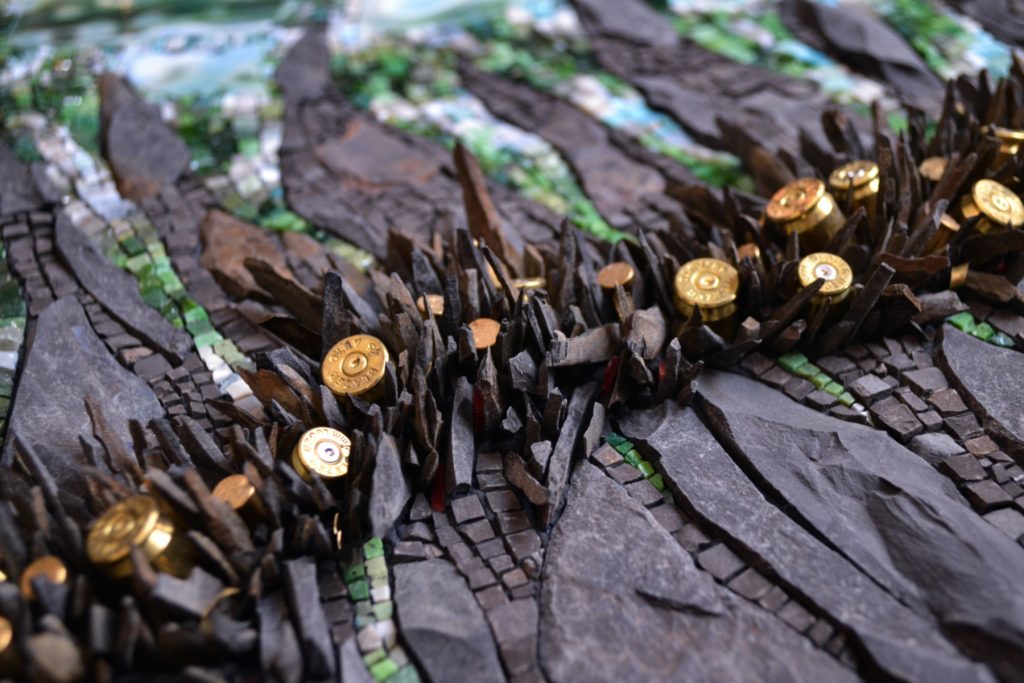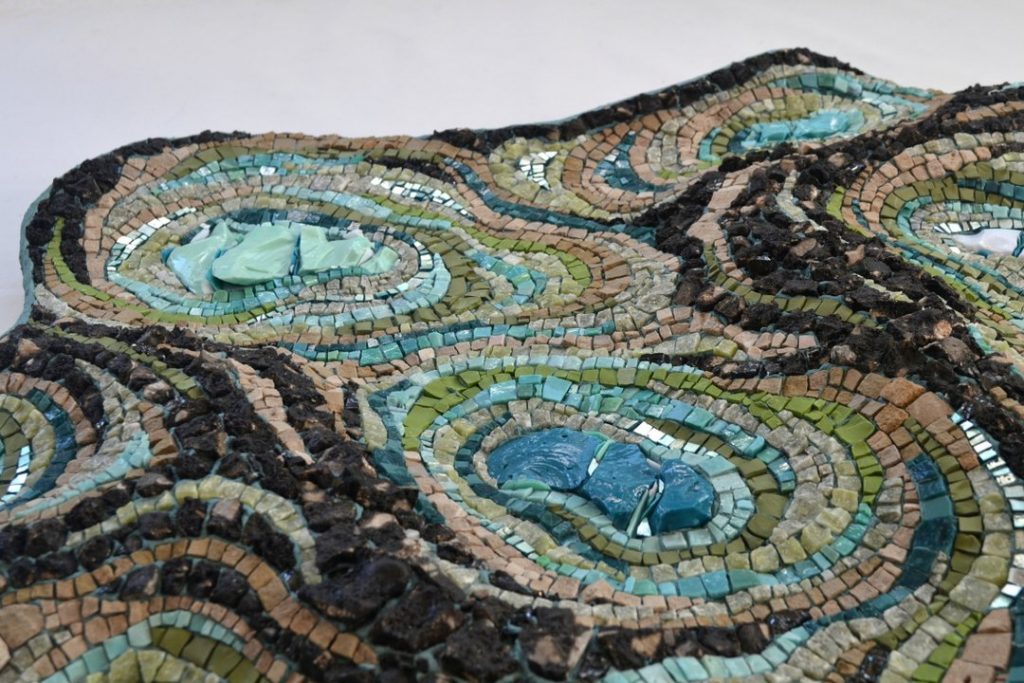
At first glance I thought those were coins—they’re bullet casings. Science policy isn’t always a boring meeting or report.
Here’s a little more about the artist Julie Sperling, from the About page on her website,
I am a Canadian mosaic artist based in Kitchener, Ontario. My studio practice finds me camped out at the intersection of art, environment, science, and policy. I firmly believe in the important role that artists play as advocates, activists, and change-makers.
When I’m not wearing my work overalls I am a policy analyst with Environment and Climate Change Canada. [emphasis mine] But really, I’m happiest when I have a rock in one hand and my hammer in the other.
Getting back to ‘Berta‘, which is part of a series “By Our Own Hands.” Spence tells the story of how the mosaic was inspired (Note: Links have been removed),
Every week, about 4 people are killed for standing up to those (predominantly industry of various stripes) who are encroaching on their traditional lands and resources, threatening the environment and their very survival. That adds up to hundreds of lives each year. More often than not, their killers go unpunished as land grabs and environmental exploitation advance, leaving death and destruction in their wake.
…
I’ve been waiting three years to make this mosaic. The issue planted itself firmly in my brain in 2016 with the assassination of Berta Cáceres, one of Honduras’ most prominent environmental activists and winner of the Goldman Environmental Prize. Cáceres co-founded the National Council of Popular and Indigenous Organizations of Honduras (COPINH) and before her murder had been working with the Lenca people to stop the Agua Zarca dam, which would have affected the Gualcarque River, a sacred river for the Lenca people. The dam would have diverted 3 kilometres of river, displacing communities and jeopardizing their water resources and livelihoods. COPINH employed many tactics to stop the construction of the dam, most notably a blockade that lasted over a year. In the end, Cáceres, who had been receiving death threats for years, was shot and killed in her home. In November 2018, seven men were convicted of her murder. Among those convicted were two employees of the construction company, DESA (one of whom was, ironically enough, the company’s “community and environmental affairs manager”), a retired military officer turned DESA employee, and an active military officer. DESA’s then-CEO is being tried separately this year [2019].
…
Science policy and real life consequences.
Because it’s Friday (September 24, 2021) I wanted to end on a more hopeful note,

From the Bioswale webpage,
This mosaic is all about using nature (specifically, rain gardens) to slow down and soak up the rain as extreme precipitation increases with climate change. …